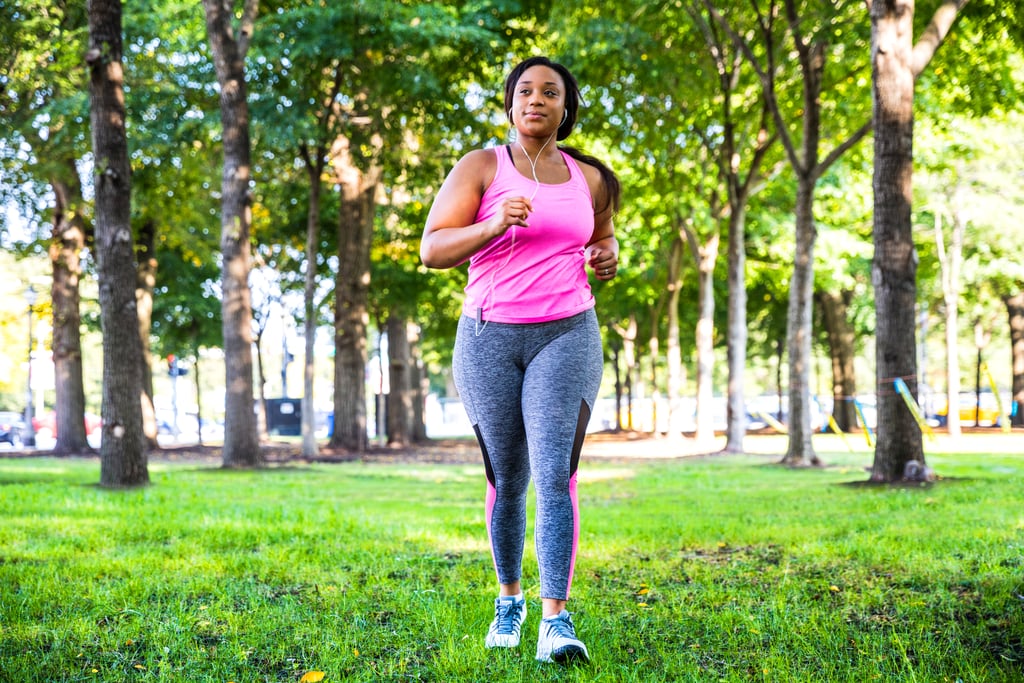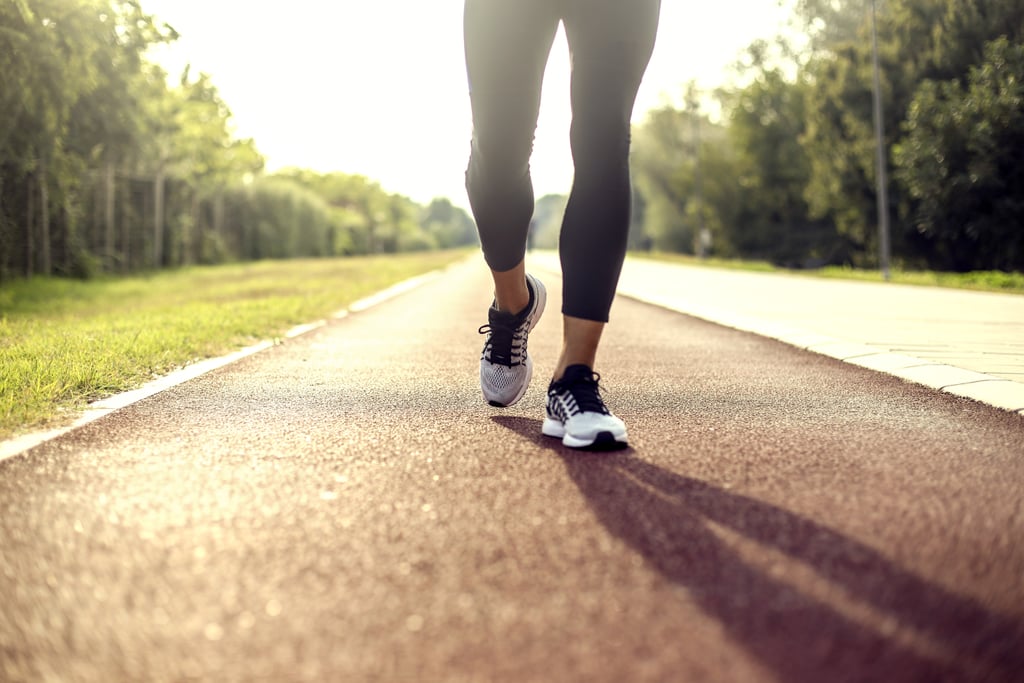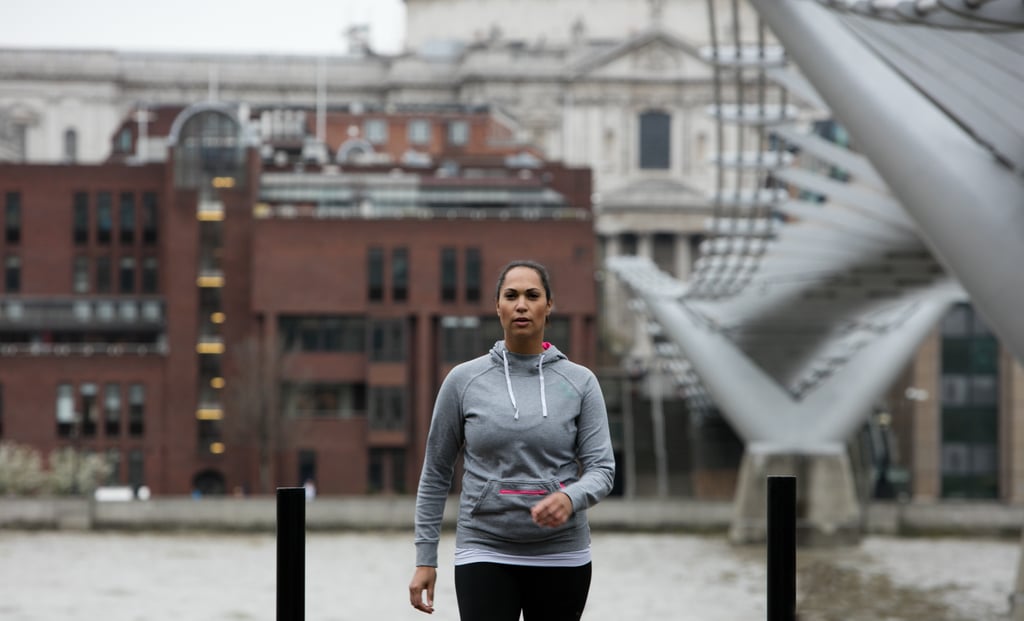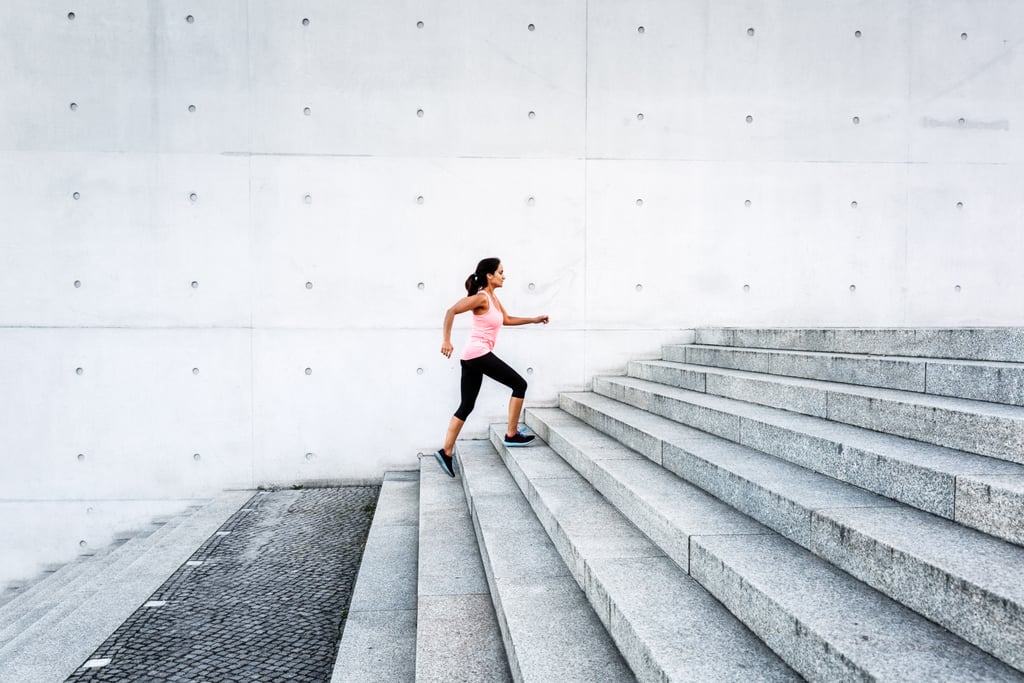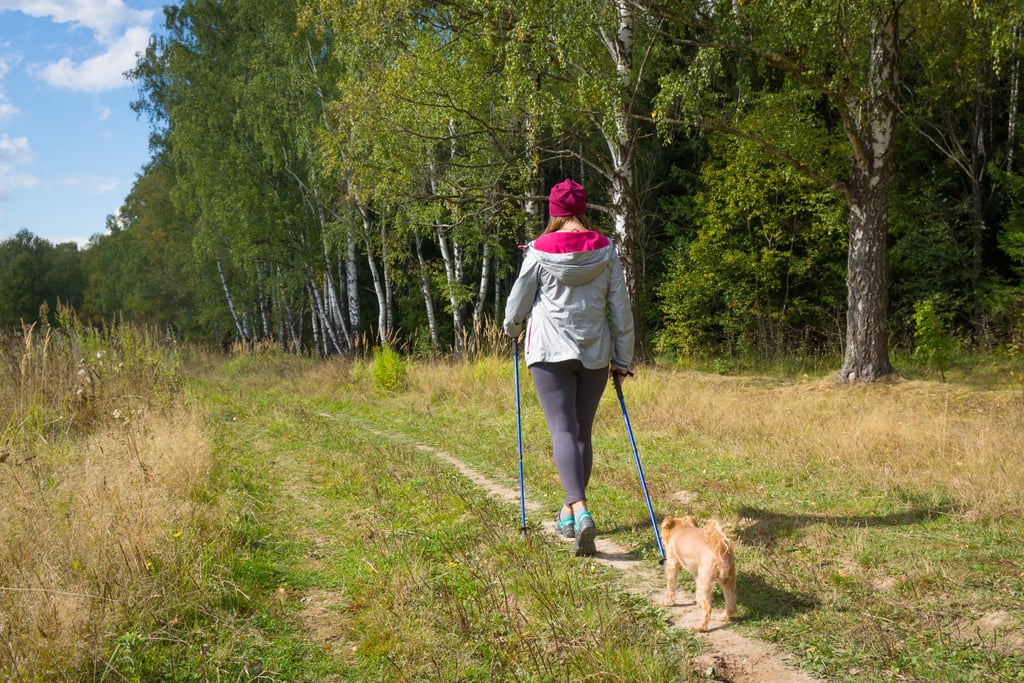As soon as Boris Johnson announced that the UK was going into a national lockdown with the exception of an hour of exercise outside, the British people laced up and stomped out in droves. No parks, forests, or footpaths were safe from ramblers and leisurely strollers. In fact, walking for exercise went up from 59 percent [1] in week one of lockdown to 63 percent in week six with a quarter of 16-24 year olds taking part and Sports Direct selling 218 percent more pairs of trainers [2] online during lockdown.
Often seen as a lesser form of exercise compared to running thanks to its slower pace, walking can hold its own as an effective form of exercise. "Walking has so many health benefits," sports physiologist Tom Cowan [3] told POPSUGAR. "It raises our heart rate to a level that we can still maintain a conversation but wouldn't be able to sing the words to a song. Not only that, walking also improves heart health, strengthens our bones, and reduces the risk of numerous health conditions, including high blood pressure, high cholesterol, and reduces the chance of stroke, coronary heart disease, type 2 diabetes, and some cancers. From a weight-loss perspective, when performed as a low- to moderate-intensity exercise, the predominant fuel source used for walking is fat, meaning that walking can lead to a positive change in an individual's body composition."
While we know the physiological benefits walking can bring, one aspect that's often overlooked is the positive mental health results it can provide [4]. Even a short burst of 10 minutes of brisk walking increases our mental alertness, energy, and positive mood according to scientists — three things we've all been lacking the last few months as we've become overly familiar with our home's four walls. "As the COVID-19 pandemic has continued, mental health has rightfully become a central topic, as more people are experiencing stress, anxiety, and ongoing uncertainty," explained Dr Myra Altman, psychologist and vice president of clinical care at Modern Health [5].
"Many locations have now entered a second lockdown, only this time it is during the autumn and winter months when the days are shorter and the weather is darker and colder. Despite these changes, being outside and getting exercise remain critical practices for managing mental health," Dr Altman continued. "We know from an abundance of research that physical exercise such as walking can be hugely impactful on mood, sleep, and stress management. It can be helpful to start small, aiming to just walk around the block, and then you can work your way up to 20 minutes or more of walking a day. And for added benefit, try to incorporate mindfulness into your walks and pay attention to your five senses, such the feeling of your feet hitting the ground, the sounds around you, etc."
A daily dose of nature can do wonders for the mood, but walking as a workout is very different to a leisurely jaunt. Not only does each stride engage the quadriceps, hamstrings, gluteals, hip flexors, and the gastrocnemius (calf) and tibialis anterior muscles of the lower legs, but walking is also a great core workout and, if we elevate our technique, we can reap the rewards. "As a rough guide, a walking speed of around 80 steps/minute is leisurely in pace, and increasing the speed to around 100 steps/minute can elicit cardiovascular fitness improvements," Cowan said. "You can also increase the intensity of your walk by engaging more muscle mass, such as swinging your arms as is seen during power walking. This increases the body's demands for oxygen delivery to the working muscles to allow muscular contraction, which the heart must meet by increasing the rate at which it contracts."
Keep reading for six ways to supercharge your stroll, according to the experts.
